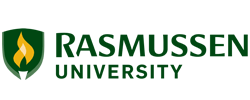The Uniform CPA Examination stands as a critical milestone for accounting professionals, representing one of the “Three Es”—education, examination, and experience—required for CPA licensure across all 55 U.S. jurisdictions. With the 2025 CPA Evolution changes on the horizon, understanding current exam requirements and preparing strategically has never been more important for aspiring CPAs.
This comprehensive guide provides everything you need to know about CPA exam requirements, from eligibility criteria to test structure, costs, and preparation strategies. Whether you’re just starting your accounting degree or ready to sit for the exam, we’ll help you navigate every step of the process.
Quick Facts: CPA Exam at a Glance
- Total Testing Time: 16 hours across 4 sections
- Passing Score: 75 on each section
- Time Limit: 18 months to pass all sections
- Average Cost: $1,000-$3,000 total
- Pass Rate: 45-60% per section
Table of Contents
- What is the CPA Exam?
- CPA Exam Eligibility Requirements
- The Four CPA Exam Sections
- How to Apply for the CPA Exam
- CPA Exam Costs and Fees
- Study Timeline and Preparation
- 2025 CPA Evolution Changes
- Study Resources and Tips
- Common Mistakes to Avoid
- Frequently Asked Questions
What is the CPA Exam?
The Uniform CPA Examination, developed and maintained by the American Institute of Certified Public Accountants (AICPA), serves as the standardized testing requirement for CPA licensure throughout the United States. This computer-based examination evaluates candidates’ knowledge and skills in accounting, auditing, taxation, and business concepts.
Since transitioning from paper-based testing in 2004, the exam has evolved significantly. The most recent major updates occurred in 2017, with the upcoming 2025 CPA Evolution representing the next significant transformation in how accounting professionals are tested and certified.
Why the CPA Exam Matters
Passing the CPA exam opens doors to numerous career opportunities and significantly impacts earning potential. According to recent industry data, CPAs earn approximately 10-15% more than non-certified accountants throughout their careers. The credential also provides:
- Enhanced credibility with clients and employers
- Exclusive practice rights for auditing and attestation
- Greater career mobility and advancement opportunities
- Access to positions at prestigious firms, including the Big Four
CPA Exam Eligibility Requirements
While the CPA exam itself remains uniform across jurisdictions, eligibility requirements vary by state. Understanding your state’s specific requirements is crucial before beginning your CPA journey.
Core Educational Requirements
Most states require candidates to complete:
Some jurisdictions allow candidates to sit for the exam with 120 credit hours (bachelor’s degree) but require the full 150 hours before licensure. This flexibility allows candidates to begin testing while completing their master’s degree in accounting or additional coursework.
State-Specific Requirements
Each state board of accountancy maintains unique requirements for:
- Specific accounting and business course distributions
- Residency requirements
- Ethics exam requirements
- Experience prerequisites for licensure
For detailed information about your state’s requirements, visit our comprehensive CPA requirements by state guide.
The Four CPA Exam Sections
The CPA exam consists of four distinct sections, each lasting four hours. Understanding the content and structure of each section is essential for effective preparation.
1. Auditing and Attestation (AUD)
The AUD section evaluates your understanding of auditing processes, professional standards, and ethics. Key topics include:
- Audit procedures and evidence collection
- Internal controls assessment
- Professional responsibilities and ethics
- Reporting standards for various entity types
Format: 72 multiple-choice questions and 8 task-based simulations
Testing Time: 4 hours
2. Business Environment and Concepts (BEC)
BEC tests your knowledge of the business environment and management concepts. This section uniquely includes written communication tasks. Topics covered:
- Corporate governance and risk management
- Economic concepts and financial management
- Information technology and operations management
- Strategic planning and market influences
Format: 62 multiple-choice questions, 4 task-based simulations, and 3 written communications
Testing Time: 4 hours
3. Financial Accounting and Reporting (FAR)
Often considered the most challenging section, FAR covers:
- Financial statement preparation and analysis
- U.S. GAAP for business enterprises
- Governmental and not-for-profit accounting
- International Financial Reporting Standards (IFRS)
Format: 66 multiple-choice questions and 8 task-based simulations
Testing Time: 4 hours
4. Regulation (REG)
The REG section focuses on federal taxation and business law:
- Individual and entity taxation
- Business law and federal tax procedures
- Professional and legal responsibilities
- Federal tax planning and compliance
Format: 76 multiple-choice questions and 8 task-based simulations
Testing Time: 4 hours
How to Apply for the CPA Exam
The application process varies depending on your jurisdiction. Here’s a step-by-step guide to help you navigate the process:
Step 1: Determine Your Testing Jurisdiction
You can take the CPA exam in any state, regardless of where you plan to practice. Consider factors like:
- Educational requirements
- Application fees
- Processing times
- Reciprocity agreements
Step 2: Submit Your Application
Applications are submitted either through:
NASBA CPA Examination Services (CPAES): Used by most jurisdictions for streamlined processing
State Board Direct Application: Required in select states, including California, Hawaii, and Delaware
Step 3: Receive Your Notice to Schedule (NTS)
Once approved, you’ll receive an NTS for each exam section. The NTS is valid for a specific testing window, typically 6-9 months.
Step 4: Schedule Your Exam
Schedule your exam through Prometric testing centers. Consider factors like:
- Testing center availability
- Your preparation timeline
- Work and personal commitments
- Score release dates
CPA Exam Costs and Fees
Understanding the full cost of becoming a CPA helps you budget appropriately. Here’s a comprehensive breakdown:
Total Investment
Most candidates spend between $3,000-$5,000 total, including:
- All exam and application fees
- Comprehensive review course
- Additional study materials
- Potential retake fees
Many employers offer CPA exam reimbursement programs, so check with your company’s HR department about available benefits.
Study Timeline and Preparation
Creating a realistic study schedule is crucial for CPA exam success. Most successful candidates dedicate 300-400 total study hours across all four sections.
Recommended Study Hours by Section
Sample 6-Month Study Timeline
Month 1-2: FAR preparation and exam
Month 2-3: AUD preparation and exam
Month 4-5: REG preparation and exam
Month 5-6: BEC preparation and exam
Remember the 18-month rule: once you pass your first section, you have 18 months to pass the remaining three sections.
2025 CPA Evolution Changes
The accounting profession continues to evolve, and the CPA exam is adapting to meet modern demands. The 2025 CPA Evolution represents the most significant change to the exam structure in decades.
Key Changes Coming in 2025
- New Core + Discipline Model: Candidates will take three core sections plus one discipline-specific section
- Technology Integration: Increased emphasis on data analytics and emerging technologies
- Specialized Pathways: Choose from Business Analysis and Reporting, Information Systems and Controls, or Tax Compliance and Planning
These changes reflect the profession’s recognition that CPAs need both broad foundational knowledge and specialized expertise to serve clients effectively in today’s complex business environment.
Study Resources and Tips
Selecting the right study materials can significantly impact your success. Consider these resources:
CPA Review Courses
Leading review course providers offer comprehensive packages including:
- Video lectures from expert instructors
- Adaptive learning technology
- Thousands of practice questions
- Realistic exam simulations
- Mobile study apps for on-the-go review
Official AICPA Resources
Don’t overlook free resources from the AICPA:
- Sample tests and tutorials
- Exam blueprints outlining tested topics
- Released questions from previous exams
- Score release information
Study Tips from Successful Candidates
“The key to passing the CPA exam is consistency. Study a little every day rather than cramming. I spent 2 hours each morning before work and passed all four sections on my first attempt.”
Additional proven strategies include:
- Create a dedicated study space free from distractions
- Use active learning techniques like teaching concepts aloud
- Take full-length practice exams under timed conditions
- Join online study groups for accountability and support
- Focus on understanding concepts, not just memorization
Common Mistakes to Avoid
Learning from others’ experiences can help you avoid costly errors:
1. Underestimating Study Time
Many candidates fail because they don’t dedicate sufficient study hours. Be realistic about the time commitment required.
2. Poor Section Ordering
Consider taking FAR first, as it has the most content. Save BEC for last since it’s generally considered the easiest.
3. Ignoring Weak Areas
Don’t skip topics you find challenging. These often appear prominently on the exam.
4. Neglecting Practice Exams
Taking practice exams helps with time management and identifies knowledge gaps.
5. Not Understanding the 18-Month Window
Plan your exam schedule carefully to avoid having passed sections expire.
Frequently Asked Questions
What are the basic CPA exam requirements?
The basic requirements include completing 150 semester hours of education (including specific accounting and business courses), passing all four sections of the Uniform CPA Examination within 18 months, and gaining relevant work experience under a licensed CPA. Specific requirements vary by state.
How much does the CPA exam cost in total?
Total CPA exam costs typically range from $3,000-$5,000, including application fees ($50-$200), exam fees ($800-$1,400 for all sections), review courses ($1,000-$3,000), and study materials. Additional costs may include retake fees and travel expenses.
Can I take the CPA exam without 150 credit hours?
Some states allow candidates to sit for the exam with 120 credit hours (bachelor’s degree), but all jurisdictions require 150 hours for licensure. Check your state’s specific requirements, as you may be able to start testing while completing additional credits.
How long do I have to pass all four CPA exam sections?
You have 18 months from the date you pass your first section to pass the remaining three sections. If you don’t complete all sections within this window, your earliest passed section expires, and you must retake it.
What’s the best order to take the CPA exam sections?
While there’s no required order, many successful candidates recommend taking FAR first (most content), followed by AUD (related concepts), then REG, and finally BEC (generally considered easiest). Choose an order that aligns with your strengths and schedule.
Do I need work experience before taking the CPA exam?
Most states don’t require work experience to sit for the exam, but you’ll need it for licensure. Typically, one year of experience under a licensed CPA is required, though some states require two years or have specific requirements for audit experience.
What happens if I fail a CPA exam section?
If you fail a section, you can retake it in the next testing window. There’s no limit on retakes, but you’ll need to pay re-examination fees. Use your score report to identify weak areas and adjust your study approach accordingly.
Are there any age restrictions for taking the CPA exam?
There are no age restrictions for taking the CPA exam. As long as you meet the educational and other requirements set by your state board, you can sit for the exam at any age.
Next Steps in Your CPA Journey
Now that you understand the CPA exam requirements, it’s time to take action. Start by:
- Verifying your state’s specific requirements
- Evaluating your educational credentials
- Selecting a target exam date
- Choosing study materials that fit your learning style
- Creating a realistic study schedule
Remember, becoming a CPA is a marathon, not a sprint. With proper preparation, dedication, and the right resources, you can join the ranks of licensed CPAs and advance your accounting career.
Ready to start your CPA journey? Explore online accounting degree programs that can help you meet the 150-hour requirement while maintaining your work-life balance.








